Introduction
The Republic of the Philippines sits on an archipelago in Southeast Asia and consists of 7,107 islands with a total area of 300,000 square kilometres. It is located at the intersection of several bodies of water: it is bounded by the Pacific Ocean in the north, the South China Sea in the west, the Sulu and Celebes Seas in the south, and the Philippine Sea in the east. Over 90 million people live on the islands, some 12 million of whom live in the capital region, Metro Manila. Most of the people on the islands are of the same racial stock as the Malays and the Indonesians, but a Chinese minority (around 1.5%) make up an influential part of the Philippine economy. There are eight major languages and close to a hundred dialects.
Constitutional history
The Philippines had long been used as a trading port in Asia, and this led to their colonization by the Spanish and later by the Americans. The Spanish converted most of the population to Catholicism and the religion remains the dominant one in the country. During the later part of more than 300 years of Spanish rule, nationalist sentiment began to grow among groups of Indios (which was how the Spanish referred to the Filipinos), fuelled in large measure by the writings of national hero Jose Rizal (later executed by the Spanish authorities) and other ilustrados (the Filipino intellegensia). A revolution was launched against Spain and the revolutionaries declared Philippine independence in Kawit, Cavite on June 12, 1898. What became known as the Malolos Congress was convened on September 15, 1898 and the first Philippine Constitution, called the Malolos Constitution, was approved on January 20, 1899, ushering what is called the First Philippine Republic. In the Spanish-American War of 1898, the revolutionaries sided with the Americans, hoping that, with the defeat of Spain, independence would be granted by the US to the Philippines. This, however, did not happen. After Spain ceded (or sold) the islands to the United States in the Treaty of Paris, the US immediately proceeded to brutally suppress the Philippine independence movement.
In 1916, the US passed the Jones Act which specified that independence would only be granted upon the formation of a stable democratic government modelled on the American model, not the French model as the previous constitution had been. The US approved a ten-year transition plan in 1934 and drafted a new constitution in 1935. World War II and the Japanese invasion on December 8, 1941, however, interrupted that plan. After heroic Filipino resistance against overwhelming odds finally ended with the fall of Bataan and Corregidor in 1942, a Japanese “republic” was established, in reality, a period of military rule by the Japanese Imperial Army. A new constitution was ratified in 1943 by Filipino collaborators who were called the Kapisanan sa Paglilingkod ng Bagong Pilipinas (Kalibapi). An active guerilla movement continued to resist the Japanese occupation. The Japanese forces were finally defeated by the Allies in 1944 and this sorry chapter came to a close.
Philippine independence was eventually achieved on July 4, 1946. The 1935 Constitution, which featured a political system virtually identical to the American one, became operative. The system called for a President to be elected at large for a 4-year term (subject to one re-election), a bicameral Congress, and an independent Judiciary.
Independence to martial law
From the moment of independence, Filipino politics have been plagued by the twin demons of corruption and scandal. Notwithstanding, Presidents Ramon Magsaysay (1953-57), Carlos Garcia (1957-61), and Diosdado Macapagal (1961-65) managed to stabilize the country, implement domestic reforms, diversify the economy, and build Philippine ties not only to the United States, but also to its Asian neighbours.
Ferdinand Marcos was elected president in 1965 and was re-elected in 1969, the first president to be so re-elected. Desirous of remaining in power beyond his legal tenure, he declared martial law in 1972, just before the end of his second and last term, citing a growing communist insurgency as its justification. He then manipulated an ongoing Constitutional Convention and caused the drafting of a new constitution – the 1973 Constitution – which allowed him to rule by decree until 1978 when the presidential system of the 1935 Constitution was replaced with a parliamentary one. Under this new system, Marcos held on to power and continued to govern by decree, suppressing democratic institutions and restricting civil freedoms. In 1981, martial law was officially lifted, but Marcos continued to rule by the expedient of being “re-elected” in a farce of an election to a new 6-year term. He continued to suppress dissent and thousands of vocal objectors to his rule either mysteriously disappeared or were incarcerated. Despite economic decline, corruption allowed Marcos and his wife Imelda to live extravagantly, causing resentment domestically and criticism internationally.
The people’s choice
When opposition leader Benigno Aquino Jr. was assassinated upon returning from exile in 1983, widespread outrage forced Marcos to hold “snap” elections a year early. The election was marked by fraud on the part of Marcos and his supporters but Marcos had himself declared the winner constitutionally, amidst international condemnation and nationwide domestic protests. A small band of military rebels tried to mount a coup, which failed because of its discovery, but this triggered what became internationally celebrated as the “People Power” revolution, when droves of people spilled out onto the streets to protect the rebels, eventually numbering well over a million. Under pressure from the United States, Marcos and his family fled into exile. His election opponent, Benigno Aquino Jr.’s widow Corazon, was installed as president on February 25, 1986.
The 1987 Constitution
Aquino began her term by repealing many of the Marcos-era regulations that had repressed the people for so long. In March, she issued a unilateral proclamation establishing a provisional constitution. This constitution gave the President broad powers and great authority, but Aquino promised to use them only to restore democracy under a new constitution. This new constitution was drafted in 133 days by an appointed Constitutional Commission of 48 members and ratified by the people in a plebiscite held on February 2, 1987. It was largely modelled on the American Constitution which had so greatly influenced the 1935 Constitution, but it also incorporated Roman, Spanish, and Anglo law.
The 1987 Constitution established a representative democracy with power divided among three separate and independent branches of government: the Executive, a bicameral Legislature, and the Judiciary. There were three independent constitutional commissions as well: the Commission on Audit, the Civil Service Commission, and the Commission on Elections. Integrated into the Constitution was a full Bill of Rights, which guaranteed fundamental civil and and political rights, and it provided for free, fair, and periodic elections. In comparison with the weak document that had given Marcos a legal fiction behind which to hide, this Constitution seemed ideal to many Filipinos emerging from 20 years of political repression and oppression.
Executive branch
The Executive branch is headed by the President and his appointed Cabinet. The President is the head of the state and the chief executive, but he is subject to significant checks from the other branches, especially in times of emergency, which, given the history of the country, was obviously intended to be a safeguard against a repeat of Marcos’ martial law despotism. For example, in cases of national emergency, the President can still declare martial law, but not for a period longer than 60 days. Congress can revoke this decision by a majority vote, or it can also extend it for a period to be determined by the Congress. Additionally, the Supreme Court can review the declaration to decide if there were sufficient facts to justify martial law. The President can grant pardons and amnesty. He is also empowered to make or accept foreign loans. He cannot, however, enter into treaties without the consent of the Senate. The President and Vice-President are elected at large by a direct vote, but the President may only serve one 6-year term. The Cabinet, consisting of the President’s advisers and heads of departments, is appointed by the President and it assists him in his governance functions.
Legislative branch
The legislative power is vested in a Congress which is divided into two Houses, the Senate and the House of Representatives. The 24 members of the Senate are elected at large by a popular vote and can serve no more than two consecutive 6-year terms. The House is composed of 250 elected members. Most of these Representatives are elected by district for 3-year terms, but 20% of the total membership is chosen in proportion to party representation. Besides the exclusive power to legislate, one of the most important powers of Congress is the ability to declare war, which it can through a two-thirds vote in both houses. Even the power to legislate, however, is subject to an executive check. The President retains the power to veto a bill passed by both houses, and Congress may override this veto only with a two-thirds vote in both houses.
Judicial branch
The Court system in the Philippines exercises the judicial power of government and it is made up of a Supreme Court and lower courts created by law. The Supreme Court is a 15-member court appointed by the President without need for confirmation by Congress. Appointment, however, is limited to a list of nominees presented to the President by a constitutionally-specified Judicial and Bar Council. This Council consists of 7 members: the Chief Justice of the Supreme Court, the Secretary of Justice, a representative from Congress, a representative of the Integrated Bar, a professor of law, a retired member of the Supreme Court, and a representative of the private sector. The first four serve for four years, the law professor for three, the retired Justice for two, and the private sector representative for one year. The Supreme Court Justices may hear, on appeal, any cases dealing with the constitutionality of any law, treaty, or decree of the government, cases where questions of jurisdiction or judicial error are concerned, or cases where the penalty is sufficiently grave. It may also exercise original jurisdiction over cases involving government or international officials. The Supreme Court also is charged with overseeing the functioning and administration of the lower courts and their personnel.
Government oversight bodies
The Constitution also establishes three independent Constitutional Commissions. The Civil Service Commission acts as a central agency in charge of government personnel. The Commission on Elections enforces and administers all election laws and regulations to ensure that they are free and fair for all involved. Finally, the Commission on Audit examines all funds, transactions, and property accounts of the government and its agencies. Each of these Commissions is given governing and financial autonomy from the other branches of government to ensure unbiased decision-making. All decisions made by these Commissions are reviewable by the Supreme Court. To further ensure the ethical and lawful functioning of the government, the Constitution also creates an Office of the Ombudsman to investigate complaints regarding public corruption, unlawful behaviour of public officials, and other public misconduct. The Ombudsman can then charge such misbehaving public officials before a special court called the Sandiganbayan. The Ombudsman is also independent administratively and financially from the other branches of government, although the President is vested with the power to appoint the Ombudsman and his Deputies (from a list also prepared by the Judicial and Bar Council) for single 7-year terms. Only the House has the power to initiate impeachment of the President, the members of the Supreme Court, and a few other constitutionally protected public officials like the Ombudsman. The Senate is then supposed to try the impeachment case. Each of these aforementioned independent agencies was created for the purpose of promoting moral and ethical conduct in government.
System of Government under 1987 Constitution
Issues and Challenges
| Issues | Challenges |
|---|---|
|
|
Timeline
| 1542 | Spanish claim the islands |
| 1898 | Spain cedes the Philippines to the US |
| 1902 | US establishes civil government to replace military rule |
| 1935 | The Commonwealth of the Philippines is established under President Manuel Quezon and the US promises independence in 10 years |
| 1941 | Japanese forces invade the islands |
| 1944 | The US retakes the islands |
| 1946 | The US grants the new Republic of the Philippines full independence |
| 1965 | Ferdinand Marcos becomes President |
| 1969 | Marcos is reelected despite allegations of elections fraud, Vietnam protests begin, Muslim separatists begin guerrilla war in the south |
| 1972 | Marcos declares martial law, suspends parliaments, arrests opposition leaders, and imposes censorship regulations |
| 1973 | New constitution adopted granting Marcos broad powers |
| 1981 | Marcos wins reelection, martial law lifted |
| 1983 | Oppoisiton leader Benigno Aquino killed as he returns to the Philippines from exile |
| 1986 | Marcos opposed in elections by Aquino’s widow Corazon, mass protests of election results in favour of Marcos forces him into exile |
| 11 February 1987 | New Constitution passed |
| 1992 | Aquino replaced as President by defence minister Fidel Ramos |
| 1996 | Peace agreement signed with Muslim separatist group |
| 1998 | Joseph Estrada, former film star, elected President |
| January 2000 | Impeachment trial against Estrada suspended, leading to mass protests which replace Estrada with Vice-President Gloria Arroyo |
| April 2001 | Estrada found guilty of stealing more than 80 million dollars of state funds during Presidency, but later pardoned |
| June 2004 | Arroyo elected to Presidency |
| 2005 | Arroyo resists attempt to impeach her under allegations of vote-rigging, declares a state of emergency in response to an alleged military coup |
| 2007-2009 | Ethnic tensions mount between Islamic separatist groups and Christian majority |
| June 2010 | Beningo “Noynoy” Aquino, son of Corazon Aquino, elected President |
*Developed with input from Dr Florangel Braid (former member of the Constitutional Commission) and Rene Azurin
Bibliography
- United States. CIA World Factbook: Philippines. , 2011. Web. 27 Jun 2011.
- "Philippines Country Profile." 22/04/2011. BBC News. Web. 27 Jun 2011.
- United States Department of State. Background Note: Philippines. , 2011. Web. 27 Jun 2011.
- United States Library of Congress. A Country Study: Philippines. , 2011. Web. 27 Jun 2011.
- 1987 Constitution of the Republic of the Philippines. 1987. Web. 27 Jun 2011.
- Maddex, Robert L. Constitutions of the World. 3rd ed. Washington, D.C.: CQ Press, 2008. Print.
- Bacani, Benedicto. Presidential System in the Philippines: Some Issues and Concerns. Web. 8 Jul. 2011.
| Branch | Hierarchy | Appointment | Powers | Removal |
|---|
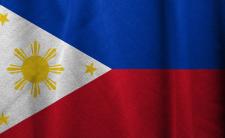
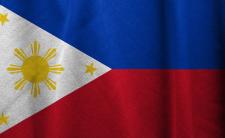
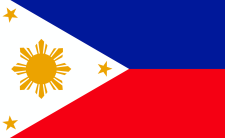
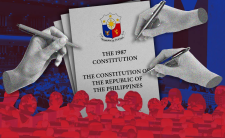
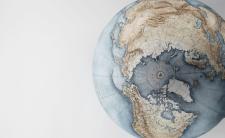

Share this article